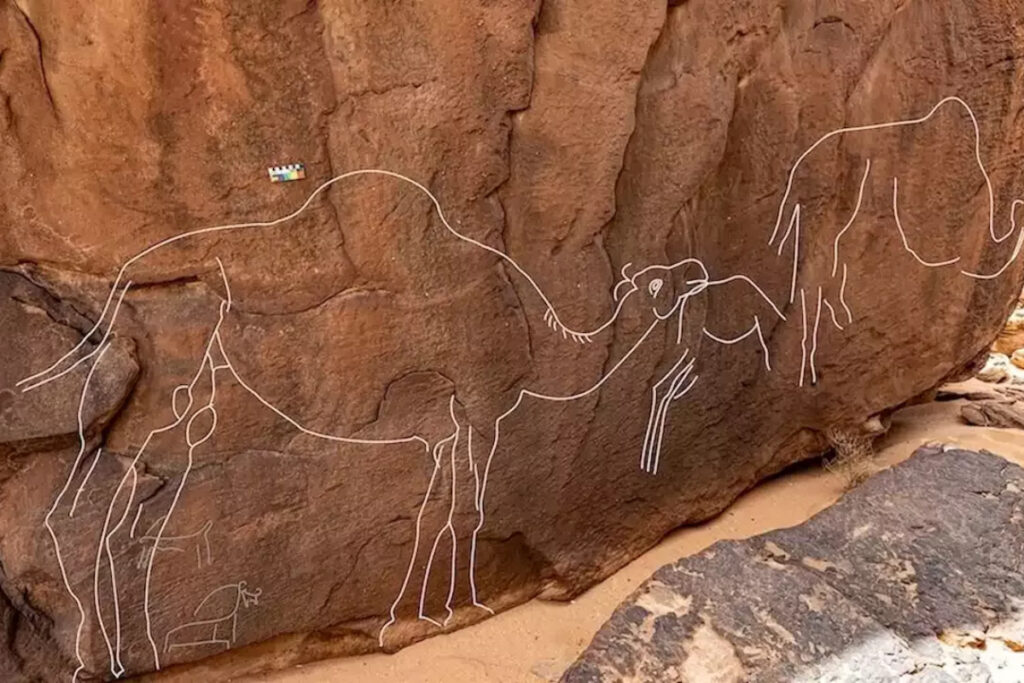A collection of mysterious ancient petroglyphs shows an image of a real camel riding on a rock discovered near the southern edge of the Nafud desert in Saudi Arabia.
According to a study in the publication Archaeological research in Asia Published, this ancient artwork depicts 12 life-size wild camels; A species of camel that roamed this part of the Arabian desert thousands of years ago. This species is now extinct and has never received a scientific name.
The site of the discovery of the petroglyphs, known as the Sahut site, has been under investigation by other archaeologists for a long time, but this is the first time anyone has noticed the presence of camel petroglyphs on the outcrop.
Maria Gogginthe senior author of the study and a postdoctoral researcher at the Max Planck Institute of Human History in Germany, to Live Science He said: “We found out about the existence of this site from another study; But it was very difficult to find this part because its exact location was not known. It is not easy to follow the path.”
Finding outcrops in sand dunes was not the only challenge for archaeologists. There are more recent carvings on camel petroglyphs, with the passage of time a layer of wonderful and strange carvings has been added to the camels, and the issue of when exactly each of these works of art was created and by whom from what culture, with a layer It is shrouded in mystery.
Goggin says the outcrops contain a dense cluster of rock art from different historical periods. Each of these carvings was done in different stages and they are different in terms of style. Also, most of the petroglyphs are carved inside the crevices of the rocks and it is very difficult to access them and radiocarbon date these works.
However, radiocarbon dating of two trenches (a depression in the ground) and two fire pits near Camels indicate that the Sahot site was repeatedly occupied between the Pleistocene (2.6 million to 11,700 years ago) and the Middle Holocene (7,000 to 5,000 years ago). It used to be a residential area.



